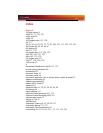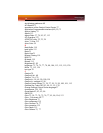
125
SDTV
SDTV is an acronym for “Standard Definition Television” that identifies
lower resolution systems when compared to High Definition Television
(HDTV) systems. SDTV systems use the same 4:3 aspect ratio and 480
scan lines to produce a picture as regular analog television sets, but digital
decoding enhanced of the signal, displaying a sharper and crisper picture.
SDTV broadcasts are either interlaced (480i) or use progressive scan
(480p), the latter method providing the best overall image quality.
SECAM
An analog color video signal that originated in France, and is used in many
other countries, including (but not limited to) much of Eastern Europe,
parts of the Middle East and Asia. Like the PAL video standard, SECAM
also draws a total of 625 vertical interlaced frames of video at a refresh rate
of 25Hz, but uses a fundamentally different way of encoding its colors. The
name is an acronym for “Séquential Couleur avec Mémoire,” which is
French for “sequential color with memory.”
Shadow Mask
In CRT monitors, the shadow mask is a metal plate full of tiny holes that is
attached to the inside of the glass screen. It focuses the beams from the
electron guns at the back of the CRT. The distance between these holes is
called the dot pitch.
SmartShader™ HD
SmartShader™ HD contains advanced vertex and pixel-shading
capabilities. A shader is a small program that runs on the GPU and
describes how an image should be rendered. Vertex shaders manipulate the
individual polygons that make up 3D objects, and pixel shaders operate on
the individual pixels that fill in these polygons to create a visible image.
SmartShader™ HD is designed to alleviate the resource constraints of
earlier shader hardware, paving the way for more complex, detailed, and
realistic shader effects in applications requiring high-performance 3D
rendering.
SmoothVision™ HD
SmoothVision™ HD incorporates improved anti-aliasing, anisotropic
filtering and 3Dc™ compression features designed to further enhance


















